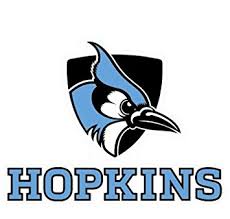
By Todd Carton –
#4 Duke Blue Devils (14-3) vs. #5 John Hopkins Blue Jays (12-4)
30 minutes following the end of game one – ESPNU
If revenge is a dish best served cold, then the Johns Hopkins Blue Jays will be looking to bring buckets of ice to Navy-Marine Corps Stadium Sunday. It’s been just over a year since the Duke Blue Devils thrashed the Blue Jays 19-6 in the first round of the NCAA Tournament dealing them one of the worst losses in program history. While Hopkins is one of the proudest programs in NCAA lacrosse, they are looking for their first return to Championship Weekend in a decade when they lost 13-10 in the 2008 championship game to Syracuse. In that same period, Duke has reached three semifinal games and won the same number of national championships though they are looking for their first return to the Final Four since their 2014 title.
Fans who aren’t acquainted with the fifth Tewaaraton Award finalist playing this weekend (and only casual fans wouldn’t be) will almost certainly know Justin Guterding’s name by close of day Sunday. Guterding leads the NCAA with 99 points and in goals per game with an average of 3.41. An efficient distributor as well as scorer, Guterding also leads the Blue Devils with 41 assists. The main beneficiaries of his passing largesse are Joe Robertson (41), Brad Smith (27) and Peter Conley (25).
Though Johns Hopkins won’t bring a Tewaaraton finalist to the field, they will bring a balance four player attack that might cause Duke problems. The Blue Jays have a pair of 30 goal scorers in Kyle Marr and Cole Williams and a duo with more than 30 assists each – Shack Stanwick and Joel Tinney. These four players – all with at least 47 points – could make Hopkins the most balanced team remaining in the field of eight.
Certainly, Duke has been among the favorites since the beginning of the year starting the season ranked number two and never falling out of the top five even after their rather surprising loss at home to Syracuse at the end of March. The Blue Devils have won six of seven since.
As for the game itself, if both games hew to the statistics and the assumptions that might arise from those numbers, the second game will look quite similar to the first. For example, although they play slightly faster than Maryland and Cornell, both Duke and Johns Hopkins play at a moderate pace. The Blue Devils take their first shot about 40 seconds into a possession while the Blue Jays hold the ball for a second longer.
Like the teams in the first game, both teams in the nightcap score efficiently. Duke is third best in the country finding the net on 36.3 percent of their possessions while Hopkins is ninth scoring 33.6% of the time. The Blue Devils do hold a distinct defensive advantage defensively allowing the opposition to score just 23.6 percent of the time while Hopkins, allowing goals at a 28.9 percent clip is considerably more porous.
In a critical phase of the game worth watching, Hunter Moreland could provide the Blue Jays with an edge at the face-off dot where he wins more than 58 percent of the time. If he can gain extra possesions for the Blue Jays, they might be able to negate Duke’s defensive advantage. Like Maryland, Duke will share faceoff duties looking for the hot player and both Bryan Smyth (.507) and Joe Stein (.560) could see action.
Also as in the first game, the goalies are more or less evenly matched. Dukes’s Danny Fowler has an 8.36 goals against average and a .537 save percentage. Brock Turnbaugh, who will stand between the pipes for the Blue Jays, brings a .515 save percentage and a goals against average of 9.24 into the contest.
And there you have it. Eight teams. Four games. Winners to advance to the Final Four in Foxboro.

Leave a Reply